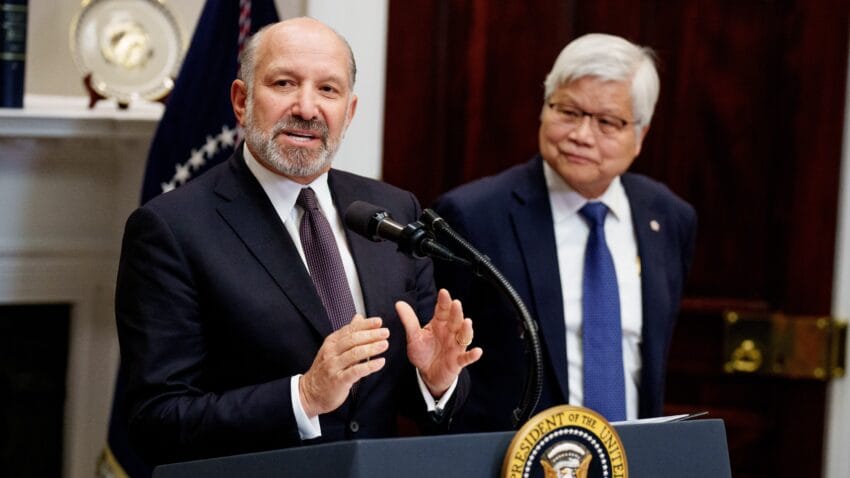
chips act funding could herald an era The U.S. government’s potential interest in acquiring an equity stake in Intel may indicate a shift in its approach to funding semiconductor initiatives under the CHIPS Act, suggesting that other beneficiaries could also face similar expectations.
chips act funding could herald an era
Understanding the CHIPS Act
Enacted in August 2022, the CHIPS Act (Creating Helpful Incentives to Produce Semiconductors for America) aims to revitalize the semiconductor industry in the United States. This legislation allocates $52 billion in federal funding to bolster domestic semiconductor manufacturing, research, and development. The primary goal is to reduce reliance on foreign semiconductor supply chains, which have proven vulnerable during global crises, such as the COVID-19 pandemic.
The CHIPS Act is not merely a financial injection; it represents a strategic pivot for the U.S. government in the global semiconductor landscape. By investing in domestic production capabilities, the U.S. seeks to regain its competitive edge in a sector that is critical to national security and economic stability. The semiconductor industry is foundational to various technologies, from consumer electronics to advanced military systems, making its health vital for the country’s future.
Equity Stake: A New Approach?
Recent discussions have emerged regarding the U.S. government’s potential acquisition of an equity stake in Intel, one of the largest semiconductor manufacturers in the world. This move could signify a broader strategy where the government not only provides grants but also seeks ownership stakes in companies that benefit from CHIPS Act funding. Such a strategy would mark a significant departure from traditional funding mechanisms, which typically involve grants or tax incentives without any ownership interest.
Rationale Behind Equity Stakes
The rationale for this shift towards equity stakes stems from a desire to ensure that taxpayer dollars are utilized effectively. By holding equity, the government may have a vested interest in the success of these companies, thereby encouraging them to meet production targets and innovate more aggressively. This could lead to a more robust semiconductor ecosystem, ultimately benefiting both the economy and national security.
Implications of an Equity Stake
The implications of this potential shift are multifaceted. Firstly, acquiring equity stakes could align the interests of the government and the companies it funds. By holding a financial interest in these companies, the government may be more motivated to ensure their success, as it would directly benefit from their growth and profitability. This could lead to more rigorous oversight and support for companies receiving funding, potentially resulting in more effective use of taxpayer dollars.
Secondly, this approach could foster a culture of accountability among semiconductor companies. If companies know that the government has a vested interest in their performance, they may be more inclined to meet production targets, adhere to timelines, and maintain transparency in their operations. This accountability could be particularly crucial in an industry where delays and supply chain disruptions can have cascading effects on the economy.
Long-term Economic Benefits
In the long run, the government’s equity stake could also yield economic benefits beyond immediate financial returns. A thriving semiconductor industry can lead to job creation, technological advancements, and increased competitiveness on a global scale. By investing in companies that are poised for growth, the government could help stimulate innovation and drive economic development in related sectors.
Potential Risks
However, the strategy of acquiring equity stakes is not without its risks. One significant concern is the potential for government overreach in corporate governance. If the government holds a substantial equity stake, it may seek to influence business decisions that are typically the purview of private shareholders. This could lead to conflicts of interest and hinder the agility and innovation that private companies often rely on to remain competitive.
Moreover, the financial implications for the government could be substantial. If the companies in which the government invests do not perform well, taxpayers could face losses. This risk could lead to public backlash against government involvement in the private sector, particularly if the perceived benefits do not materialize.
Market Volatility and Economic Conditions
Additionally, the semiconductor industry is known for its volatility, influenced by rapid technological changes and fluctuating market demands. If the government finds itself holding equity in underperforming companies during economic downturns, it could face significant scrutiny. This could further complicate the relationship between the government and the private sector, potentially leading to a lack of trust and cooperation.
Stakeholder Reactions
The potential for the U.S. government to take equity stakes in semiconductor companies has elicited a range of reactions from various stakeholders. Industry leaders, policymakers, and analysts are weighing the pros and cons of this approach.
Industry Leaders
Some industry leaders have expressed cautious optimism about the government’s potential equity involvement. They argue that having a government partner could provide companies with additional resources and stability, particularly in a volatile market. For instance, companies may benefit from government support in navigating regulatory challenges or securing additional funding for research and development.
On the other hand, some executives have voiced concerns about government interference. They fear that the government’s involvement could stifle innovation and slow decision-making processes. In a rapidly evolving industry like semiconductors, where speed and adaptability are crucial, any bureaucratic hurdles could hinder competitiveness.
Policymakers
Policymakers are also divided on the issue. Some advocate for a more hands-on approach, arguing that the government must play an active role in shaping the future of the semiconductor industry. They contend that with global competitors like China investing heavily in their semiconductor sectors, the U.S. cannot afford to take a passive stance.
Conversely, other policymakers caution against overreach, emphasizing the importance of maintaining a free market. They argue that while government support is necessary, it should not come at the cost of stifling private enterprise. The balance between government involvement and market freedom is a delicate one, and finding that equilibrium will be crucial for the success of the CHIPS Act.
Analysts
Market analysts are closely monitoring the situation, particularly in light of the potential equity stake in Intel. Some view this as a positive development that could lead to increased investment in the semiconductor sector. They argue that the government’s involvement could attract additional private investment, creating a more robust ecosystem for semiconductor manufacturing and innovation.
Others, however, caution that the government’s equity stake could lead to market distortions. If companies perceive government funding as a guarantee of success, they may become less inclined to innovate or take risks. This could ultimately undermine the very goals of the CHIPS Act, which aims to foster a competitive and dynamic semiconductor industry.
Global Context
The U.S. government’s potential shift towards acquiring equity stakes in semiconductor companies must be understood within a broader global context. Countries like China and South Korea have made significant investments in their semiconductor industries, often with government backing. This has raised concerns among U.S. policymakers about maintaining a competitive edge in a critical sector.
China, in particular, has been aggressively pursuing its semiconductor ambitions, with the government providing substantial subsidies and support to domestic companies. This has led to fears that the U.S. could fall behind if it does not adopt a more proactive approach to its semiconductor strategy.
International Reactions
International reactions to the U.S. government’s potential equity stake strategy are varied. Some countries may view this as a signal that the U.S. is serious about revitalizing its semiconductor industry and may respond by ramping up their own investments. Others may see it as a threat, prompting them to strengthen their own semiconductor capabilities in response.
In Europe, for example, the European Union has been working on its own semiconductor strategy, aiming to increase its share of global semiconductor production. The U.S. government’s actions could influence European policymakers as they consider their next steps in this competitive landscape.
Conclusion
The potential for the U.S. government to acquire equity stakes in semiconductor companies under the CHIPS Act represents a significant shift in strategy. While this approach could foster greater accountability and alignment of interests between the government and the private sector, it also poses risks related to government overreach and market distortions. As stakeholders continue to react to this potential development, the future of the U.S. semiconductor industry remains uncertain but critical to national interests.
Source: Original report
Was this helpful?
Last Modified: September 6, 2025 at 4:00 am
7 views















